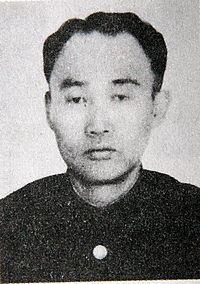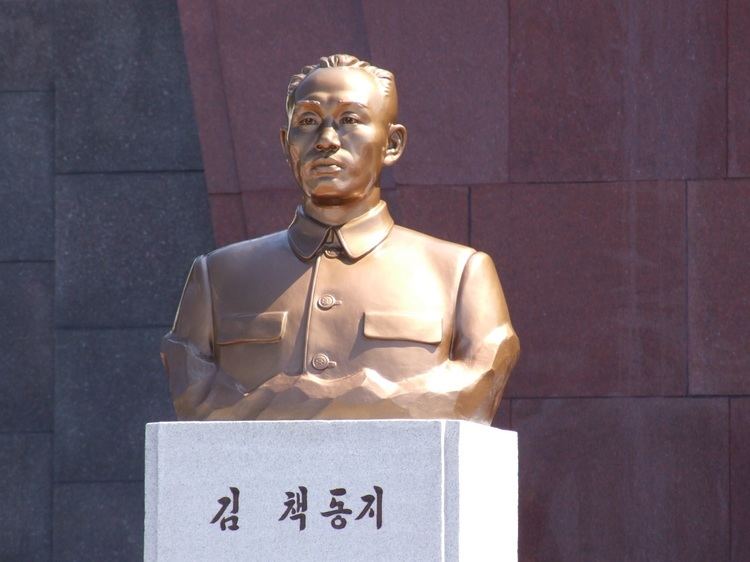Nationality Korean Died January 31, 1951 Role Politician | Name Kim Chaek Children Kim Kuk-tae | |
 | ||
Native name Hangul: 김책 or Hanja: 金策 Monuments Songjin City was renamed to Kim Chaek City to commemorate his life. Similar People Choe Yong‑gon, Pak Hon‑yong, Kim Il‑sung, Douglas MacArthur, Shin Sung‑mo | ||
North Korea launches online library project
Kim Chaek University of Technology | Wikipedia audio article
Kim Chaek (Chosongul: 김책, Hanja: 金策, 14 August 1903 – 31 January 1951) was a North Korean National resistance activist, general and politician. His real name was Kim Hong-gye(김홍계, 金洪啓).
Contents
- North Korea launches online library project
- Kim Chaek University of Technology Wikipedia audio article
- Life
- Posthumous honours
- Work
- References

Life
Born in Sŏngjin, early years Kim joined the guerrilla war against the Japanese occupation in 1927 and fought alongside Kim Il-sung in Manchuria. He joined the Korean People's Revolutionary Army in 1932. He defected to the Soviet Union to escape the Japanese conquest of the partisans in 1940. He lived in Khabarovsk where he met with Kim Il-Sung and formed the 88th Special Brigade. He returned to Korea along with the Soviet Army. He was appointed number 2 Committee Vice Chairman in the Korean Workers Party. Kim Chaek became industry minister and deputy prime minister under Kim Il-Sung in 1948. In the Korean War, he was commander of the North Korean troops on the front lines.
Kim was purged when he was found responsible for the failure at the Incheon Landing. He died in January 1951. Some scholars believe that his death was an assassination after a power struggle, and caused by gas poisoning rather than a heart attack as officially claimed.
Posthumous honours
After his death, Kim Chaek's birthplace Haksong County combined with the neighboring Songjin City was renamed to Kim Chaek City to commemorate his life. The Kim Chaek University of Technology, Kim Chaek Iron and Steel Complex, and Kim Chaek People's Stadium are also named after him. The stadium is located at 40°41'0"N 129°11'47"E.
He was posthumously awarded North Korea's National Reunification Prize in 1998.
